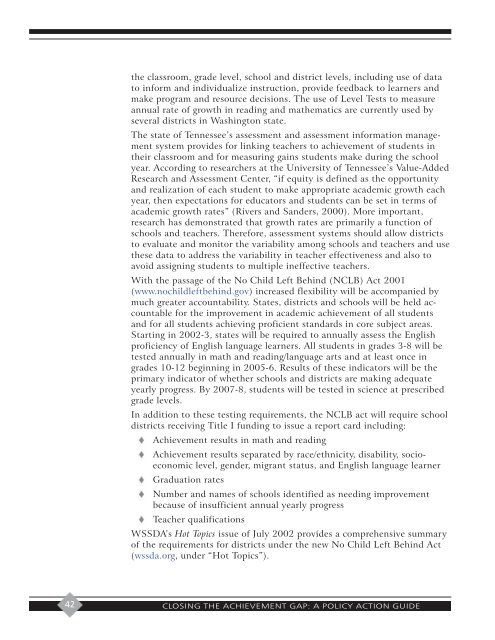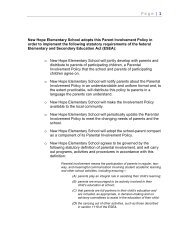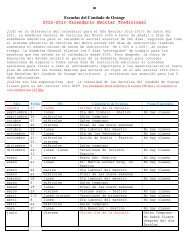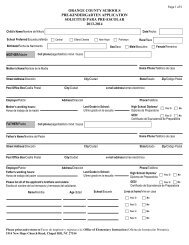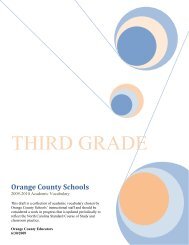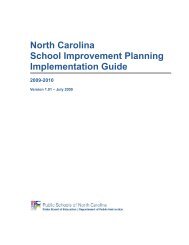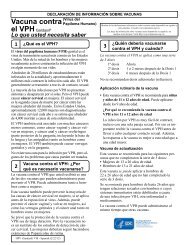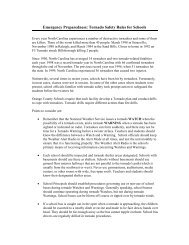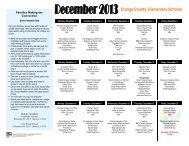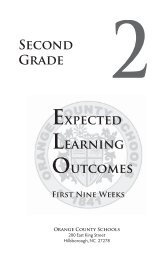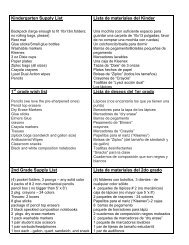Closing the Achievement Gap - Washington State School Directors ...
Closing the Achievement Gap - Washington State School Directors ...
Closing the Achievement Gap - Washington State School Directors ...
Create successful ePaper yourself
Turn your PDF publications into a flip-book with our unique Google optimized e-Paper software.
<strong>the</strong> classroom, grade level, school and district levels, including use of datato inform and individualize instruction, provide feedback to learners andmake program and resource decisions. The use of Level Tests to measureannual rate of growth in reading and ma<strong>the</strong>matics are currently used byseveral districts in <strong>Washington</strong> state.The state of Tennessee’s assessment and assessment information managementsystem provides for linking teachers to achievement of students in<strong>the</strong>ir classroom and for measuring gains students make during <strong>the</strong> schoolyear. According to researchers at <strong>the</strong> University of Tennessee’s Value-AddedResearch and Assessment Center, “if equity is defined as <strong>the</strong> opportunityand realization of each student to make appropriate academic growth eachyear, <strong>the</strong>n expectations for educators and students can be set in terms ofacademic growth rates” (Rivers and Sanders, 2000). More important,research has demonstrated that growth rates are primarily a function ofschools and teachers. Therefore, assessment systems should allow districtsto evaluate and monitor <strong>the</strong> variability among schools and teachers and use<strong>the</strong>se data to address <strong>the</strong> variability in teacher effectiveness and also toavoid assigning students to multiple ineffective teachers.With <strong>the</strong> passage of <strong>the</strong> No Child Left Behind (NCLB) Act 2001(www.nochildleftbehind.gov) increased flexibility will be accompanied bymuch greater accountability. <strong>State</strong>s, districts and schools will be held accountablefor <strong>the</strong> improvement in academic achievement of all studentsand for all students achieving proficient standards in core subject areas.Starting in 2002-3, states will be required to annually assess <strong>the</strong> Englishproficiency of English language learners. All students in grades 3-8 will betested annually in math and reading/language arts and at least once ingrades 10-12 beginning in 2005-6. Results of <strong>the</strong>se indicators will be <strong>the</strong>primary indicator of whe<strong>the</strong>r schools and districts are making adequateyearly progress. By 2007-8, students will be tested in science at prescribedgrade levels.In addition to <strong>the</strong>se testing requirements, <strong>the</strong> NCLB act will require schooldistricts receiving Title I funding to issue a report card including:<strong>Achievement</strong> results in math and reading<strong>Achievement</strong> results separated by race/ethnicity, disability, socioeconomiclevel, gender, migrant status, and English language learnerGraduation ratesNumber and names of schools identified as needing improvementbecause of insufficient annual yearly progressTeacher qualificationsWSSDA’s Hot Topics issue of July 2002 provides a comprehensive summaryof <strong>the</strong> requirements for districts under <strong>the</strong> new No Child Left Behind Act(wssda.org, under “Hot Topics”).42CLOSING THE ACHIEVEMENT GAP: A POLICY ACTION GUIDE


